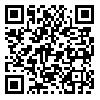2- Shahid-Sadoughi University of Medical Sciences, Yazd, Iran.
3- , Izeh Branch , Islamic Azad
4- School of Medicine, Isfahan University of Medical Sciences, Isfahan, Iran
Background: Leishmania major and leishmania tropica are the main causes of cutaneous leishmaniasis in Iran, especially in Isfahan and Bam regions. In this study, noticing the effect of diversity of this parasite strains on designing disease control strategies, human isolates were examined through PCR-RFLP to determine the type of strains. Materials and Methods: In this experimental study, 340 samples obtained from CL patients due to Leishmania were cultured and prepared for microscopic study and examined through PCR-RFLP. The products of some of these samples were sequenced and analyzed. ITS1 region of genomic DNA was extracted and amplified with LITSr and L5.8s primers. Data on sequencing the samples were related to ITS1 region that in extracted DNAs with LITSr and L5.8s primers appeared with four kinds of genotype patterns, two for L.major and two for L.tropica in Isfahan and Bam regions. Results: Genotypic groups, LmA and LmB, were detected from L.major isolates while LtA and LtB genotypic groups were indicated for L.tropica in these two regions. The most prevalent genotypes related to isolates of Isfahan were LmA geneotype, whereas LtA geneotype was mostly reported in isolates of Bam. Conclusion: Leishmania major and leishmania tropica, the causative agents of zoonotic cutaneous leishmaniasis (ZCL) in Isfahan and anthroponotic cutaneous leishmaniasis (ACL) in Bam, respectively, are genetically polymorphic species. There exists a relationship between genetic heterogeneousness and clinical manifestation and geographical regions of this disease in human
Received: 2010/06/12 | Accepted: 2016/07/5
| Rights and permissions | |
 |
This work is licensed under a Creative Commons Attribution-NonCommercial 4.0 International License. |


